The Current State of the Aviation Job Market

The aviation industry continues to evolve rapidly, and understanding employment trends is vital for companies seeking top talent and professionals navigating their careers. As of May 2025, the industry has seen significant shifts, and staying informed about the current landscape is key to remaining competitive.
Aviation Job Market Overview
The aviation job market in 2025 reflects a strong recovery and growth trajectory following the pandemic. According to the U.S. Bureau of Transportation Statistics, the total number of employees in the U.S. airline industry reached 1,008,949 in March 2025, a 0.4% increase from the previous month. Specifically, U.S. scheduled passenger airlines employed 517,796 full-time equivalent employees, up 0.5% from the prior month.
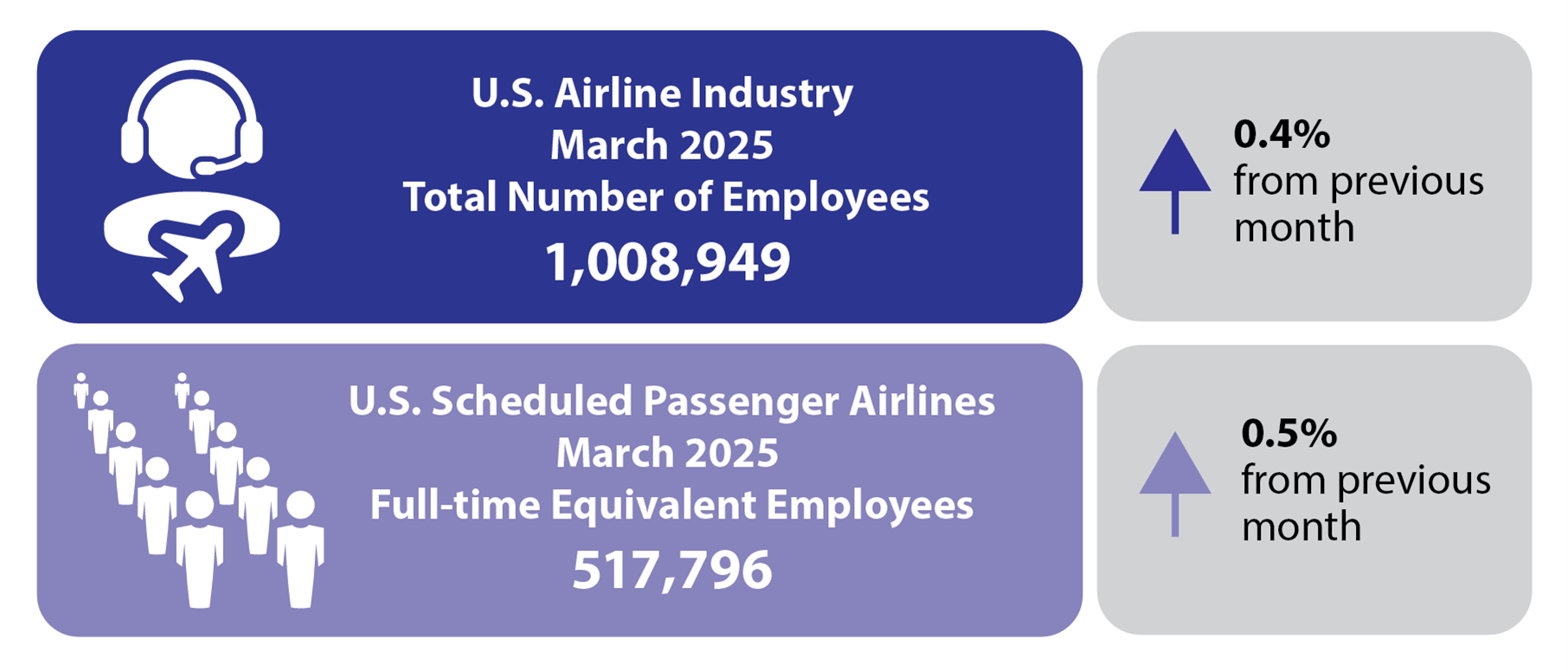 Source: U.S. Bureau of Transportation Statistics
Source: U.S. Bureau of Transportation Statistics
Looking at recent trends, employment in the U.S. airline industry has shown steady growth from March 2023 to March 2025, rising from 780,000 to 1,008,949 employees.
Key drivers of this growth include:
Airlines and Charter Services: Expanded fleets and routes have increased demand for pilots, cabin crew, and operational staff.
Maintenance, Repair, and Overhaul (MRO) Services: Higher aircraft utilization rates have spurred growth in MRO roles.
Technological Advancements: New roles in avionics, digital transformation, and unmanned aerial systems are emerging due to technological progress.
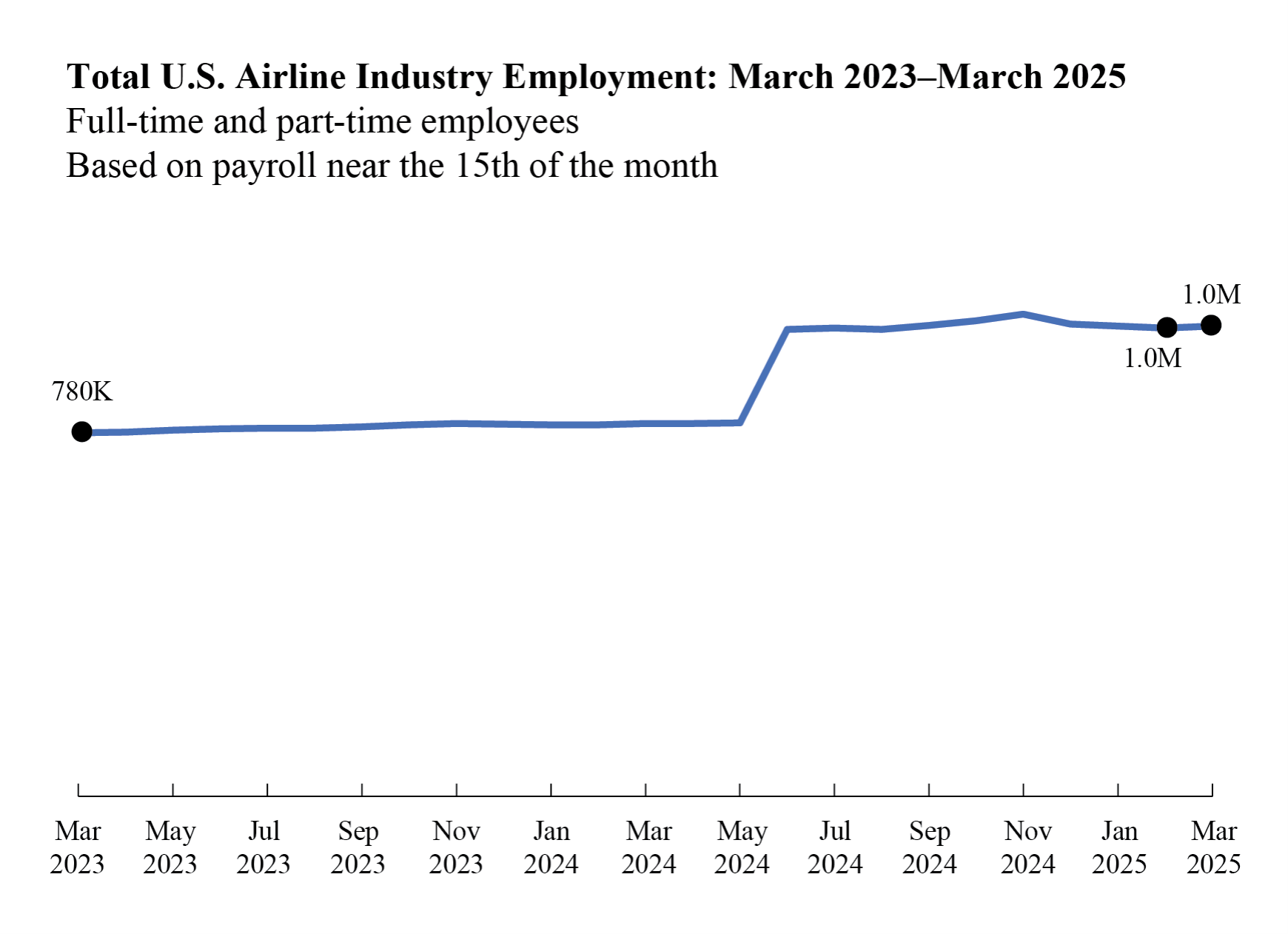 Source: U.S. Bureau of Transportation Statistics
Source: U.S. Bureau of Transportation Statistics
Key Hiring Trends in 2025
The aviation sector in 2025 is shaped by several notable trends:
Demand for Skilled Pilots and Technicians:
The U.S. Bureau of Labor Statistics reports a projected 7% employment growth for air transportation workers, including a 6% increase for commercial pilots, from 2023 to 2033, outpacing the 4% average for all occupations.
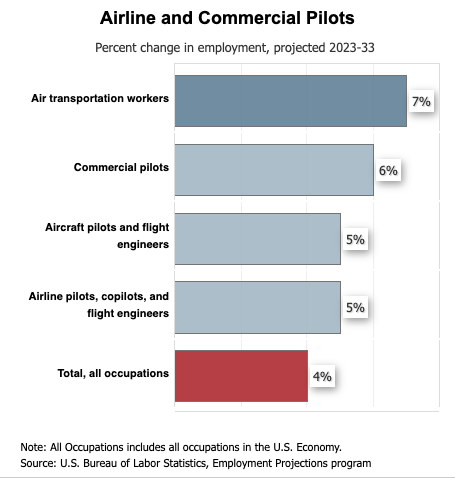 Source: U.S. Bureau of Labor Statistics – Airline and Commercial Pilots
Source: U.S. Bureau of Labor Statistics – Airline and Commercial Pilots
Growth in Avionics and Maintenance Roles:
Employment for avionics technicians is projected to grow by 8% from 2023 to 2033, compared to a 5% increase for aircraft mechanics and technicians.
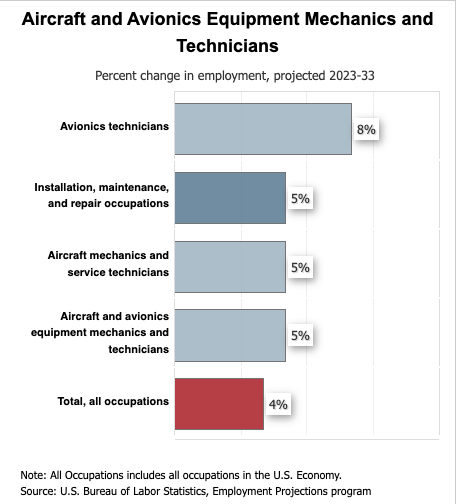 Source: U.S. Bureau of Labor Statistics – Aircraft and Avionics Equipment Mechanics and Technicians
Source: U.S. Bureau of Labor Statistics – Aircraft and Avionics Equipment Mechanics and Technicians
Aerospace Engineering Opportunities:
Aerospace engineers are seeing a 9% projected employment increase over the same period, reflecting demand in aerospace manufacturing and defense.
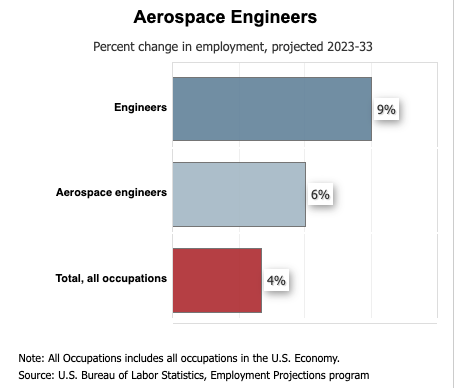 Source: U.S. Bureau of Labor Statistics – Aerospace Engineers
Source: U.S. Bureau of Labor Statistics – Aerospace Engineers
Rise in Specialized Roles: Advances in drones, AI, and robotics are creating new career paths, as noted in the IATA Workforce Skills and Training Report.
Industry Sectors Driving Growth
Several sectors within aviation are experiencing significant growth in 2025:
Commercial Aviation: Post-pandemic travel demand continues to fuel hiring.
Cargo and Logistics: The rise of e-commerce and global trade has boosted employment in this sector.
Defense and Aerospace: Geopolitical factors and increased defense budgets are driving recruitment, particularly for aerospace engineers.
Challenges in Aviation Hiring
Despite the growth, employers face challenges:
Talent Shortages: The IATA Global Skills Survey highlights a limited pool of qualified pilots and technicians.
Retention Issues: Competition has increased the need for robust retention strategies.
Training Bottlenecks: Lengthy training and certification processes are slowing hiring, as noted in the IATA Workforce Skills and Training Report.
Impact of Technology on Aviation Employment
Technology continues to reshape the industry:
Automation and AI: These technologies streamline operations but require skills in system integration.
Remote Training: Virtual and augmented reality are reducing onboarding times.
Drones and Unmanned Aerial Systems (UAS): New roles in drone operation and airspace management are emerging.
Aviation Job Market Trends in 2025
Reflecting on historical data, employment at U.S. scheduled passenger airlines has grown significantly since the post-COVID recovery, reaching 488,000 in March 2023 and 517,796 in March 2025.
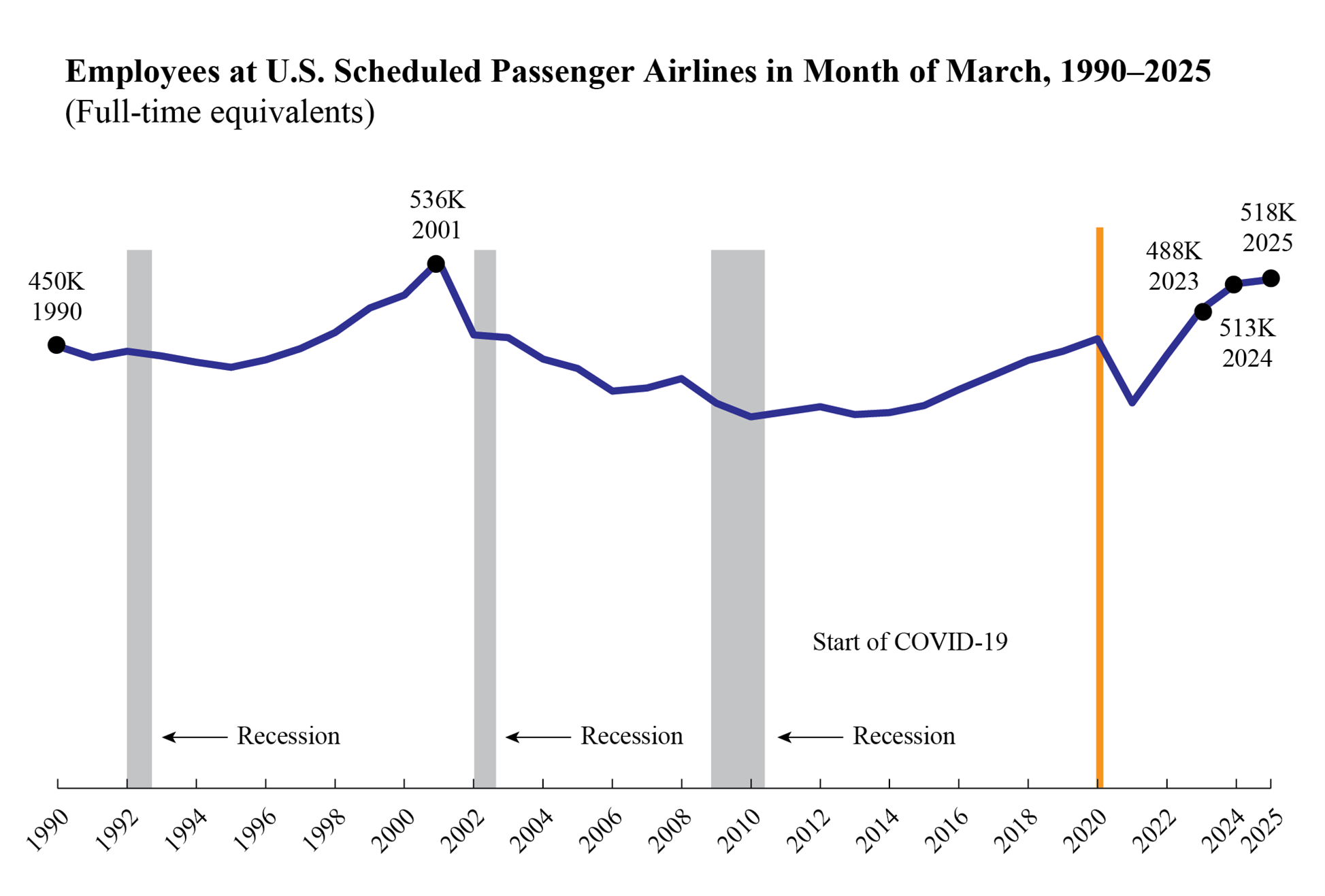 Source: U.S. Bureau of Transportation Statistics
Source: U.S. Bureau of Transportation Statistics
Current trends in 2025 include:
Sustained Growth: Pilot, technician, and tech-focused roles continue to expand.
Compensation Increases: Companies are offering better salaries to attract talent.
Diversity and Inclusion: There’s a growing emphasis on inclusive hiring practices.
Conclusion
The aviation job market in 2025 is thriving, with significant growth in employment and new opportunities driven by technology and demand. However, challenges like talent shortages and training bottlenecks persist. Companies must leverage specialized recruitment support, invest in tech training, and prioritize retention and diversity to stay competitive.
For more insights and to enhance your aviation recruitment strategy, contact our team at Total Aviation Staffing to secure the industry’s best talent.
